First, two of the three purple martins were released just this morning! I’d worried that the third, the runt, might not be ready but decided to try him anyway, as his sibs were chomping at the bit for freedom. Sadly, he wasn’t, but his sibs took off with great joy into a martin colony on the property of Michelle and Bill Hubbard. You may recall Michelle is one of the vets at Smalley’s, and she and Bill graciously allowed me to release these young birds on their lovely site.
Six Carolina wrens, pre-fledges from two separate nests were found in local eatery parking lots; sadly, neither clutch lived 24 hours past intake. Carolina wrens are high-stress birds and we don’t know how long these babies were in their respective parking lots before being found. Adding insult to injury for one clutch, they wandered in the rain before being rescued; the second clutch must’ve been down a while because the rescuer said there were bread crumbs near them in the parking lot.
All together now, boys and girls: BABY BIRDS DO NOT EAT BREAD.
We have one lone Carolina wren holdout in the songbird flight, but she’s getting antsy, so she’ll be outta here this week.
A woman was enjoying watching a nest of baby birds on her porch when one morning last week she heard a thump and looked out to see a snake. She said she was initially going to take a photo of the snake but when she saw he had one of “her” babies in its mouth, she took action to scare the snake into dropping the bird. Unfortunately, all his sibs had been eaten and he was thoroughly traumatized.
I’m leaning toward Eastern phoebe, although least flycatcher is also a possibility. He’s still very easily spooked; just changing his paper causes him to hunker down in defensive mode. But he does call for food and eat readily, so I think he’s gonna be okay.
However, two more thrashers came in, one cat-attacked and one birdnapped. Again, KEEP YOUR CATS INDOORS. And for God’s sake, remember that recent fledglings don’t fly well and spend a lot of time on the ground or flitting from one low branch to another. Unless they’re injured or in danger, LEAVE THEM ALONE and let the parents finish their job.
Prime example of the right time to intervene: Lady found a blue jay, older fledgling, in her carport with a puncture wound to the head. Because she was unsure if the wound was from another bird or from free-roaming cats, she called LWR and asked if she should intervene. Since cat attack was a distinct possibility, I said yes; we’d do meds to be safe.
While he bonded well with the thrashers, he’s taken a while longer to accept me as a surrogate parent. Happily, he’s doing well and he and the thrashers will be flight pen-bound this week.
Luckily, this jay was uninjured but we had no way of knowing if cat saliva was on his feathers. To LWR, then, for meds. Better safe than sorry.
The great horned owls, screech, barred owl and red shouldered hawk show no real change from last week. The GHOs still refuse to touch live prey; the screech would eat the GHOs if he was big enough; the barred owl is finally eating on his own; the red shoulder still requires force-feeding.
The crow is…well, a crow. He’s noisy, messy, demanding and throws tantrums. Typical corvid. Honestly, I don’t know why I love the aggravating rascals so.
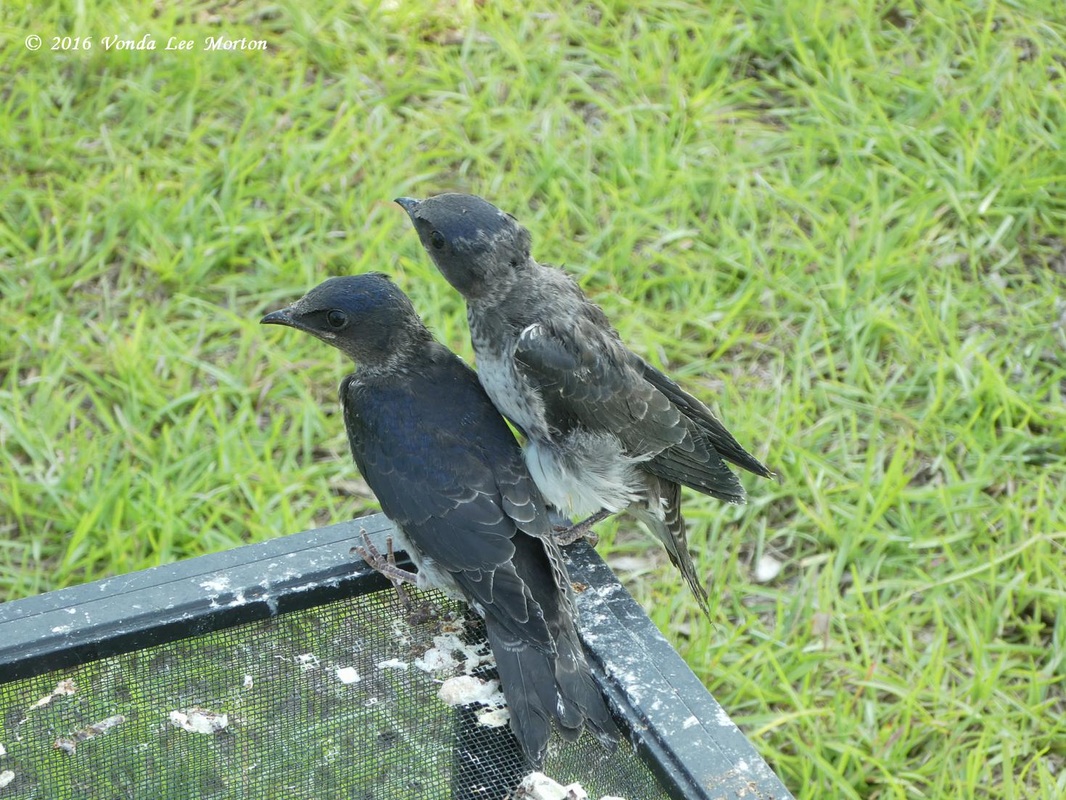
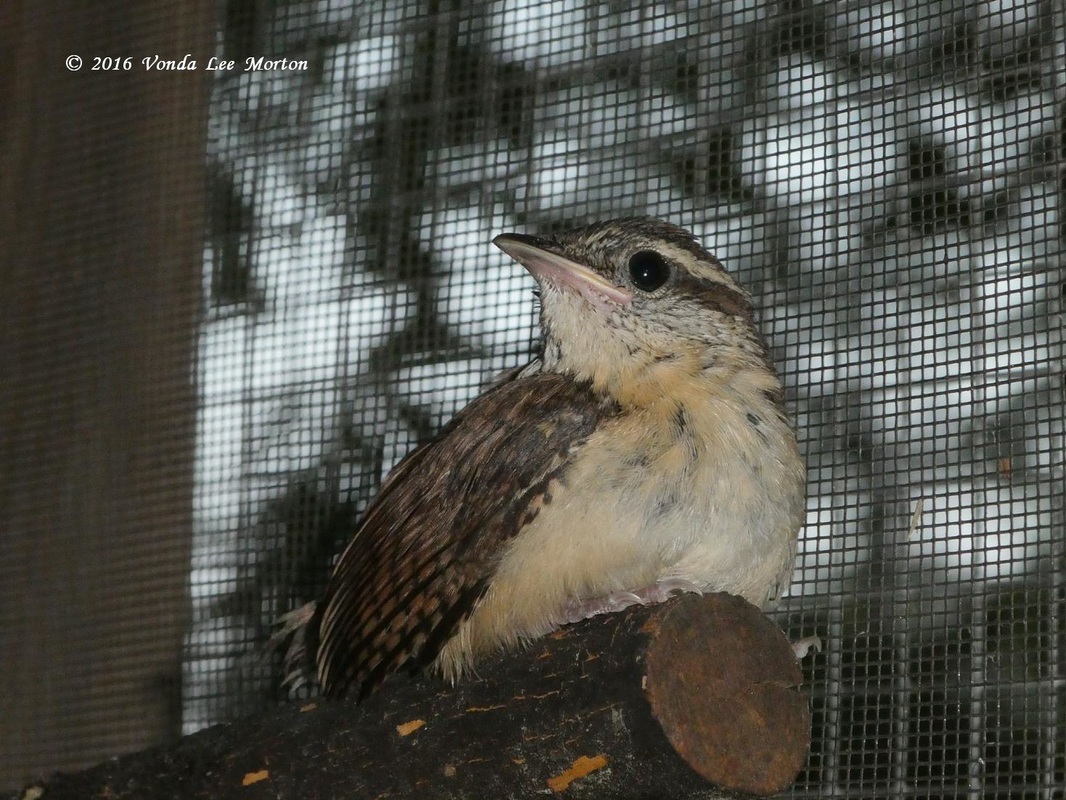
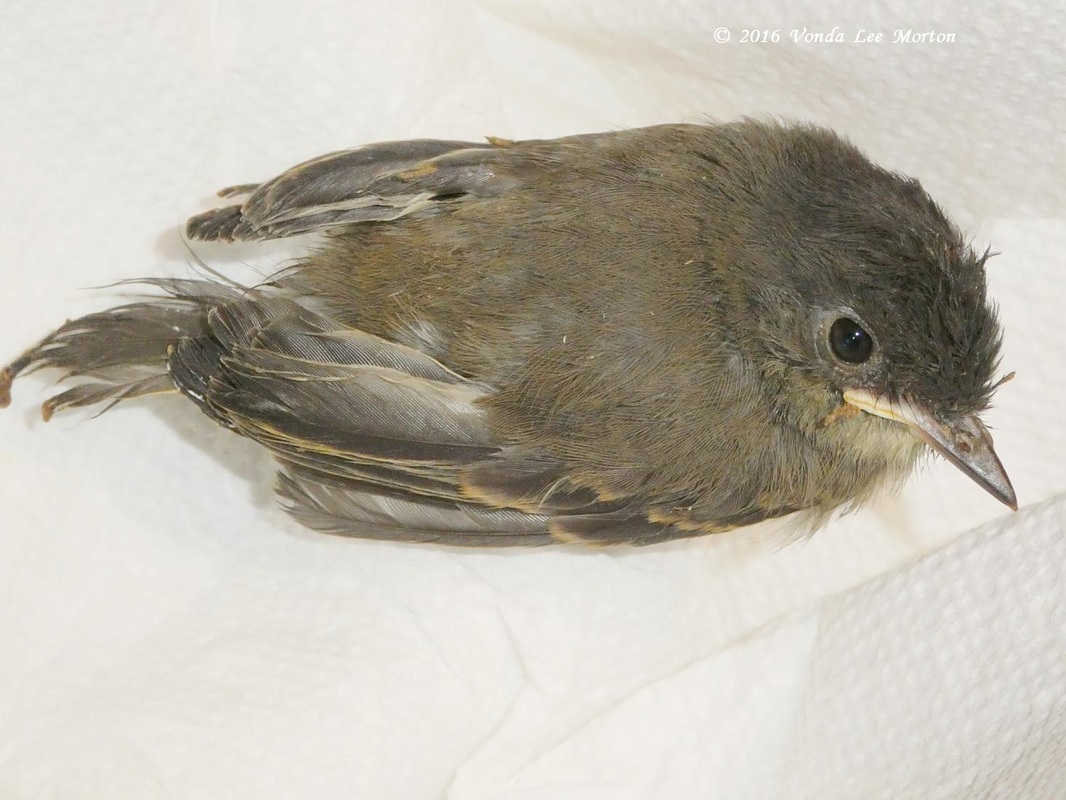
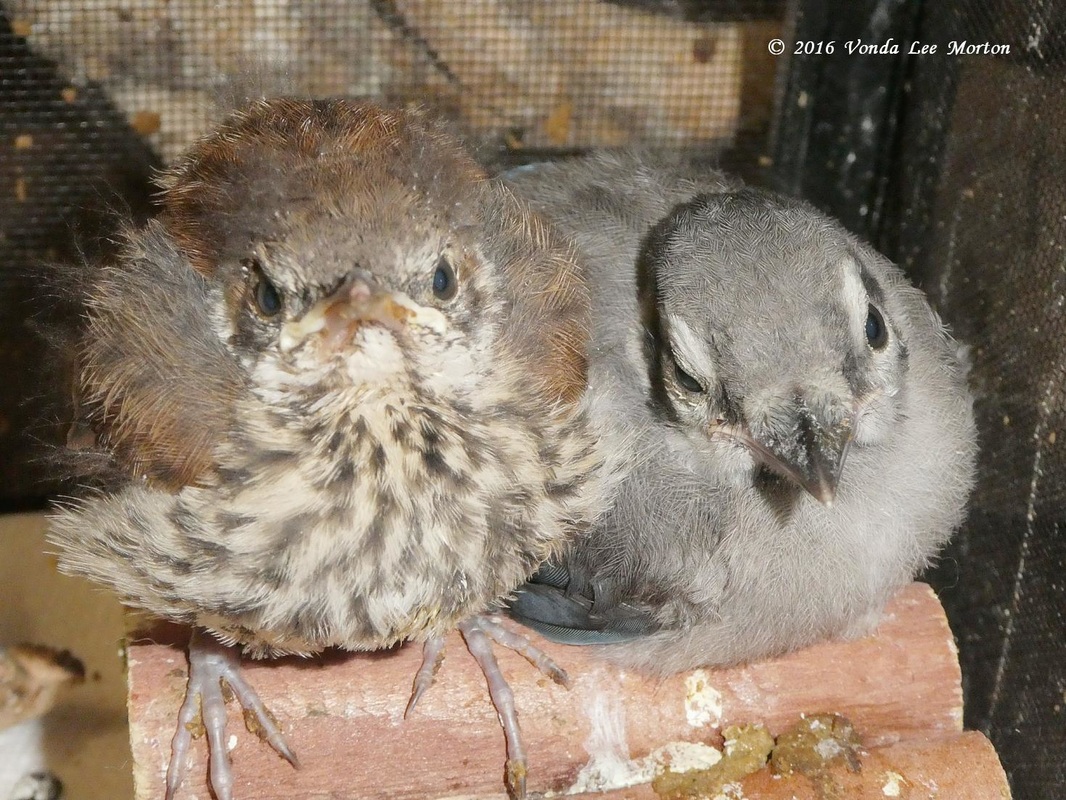
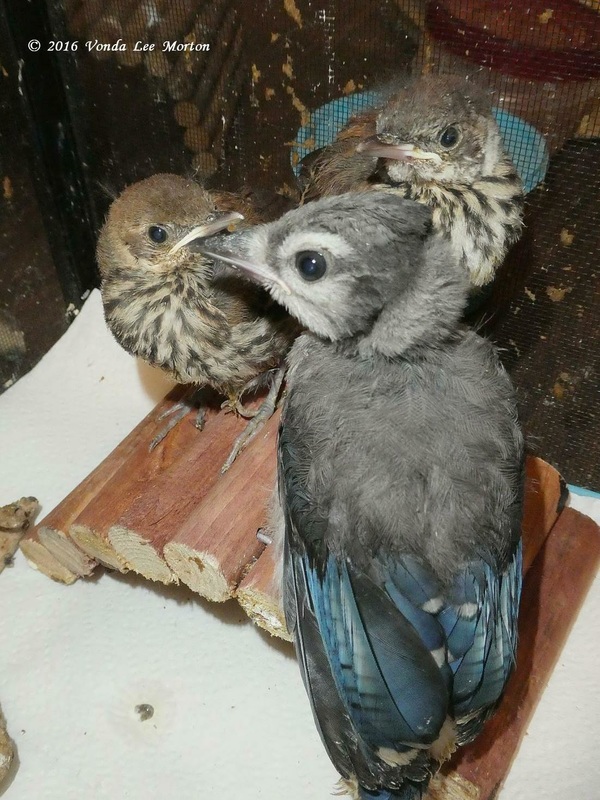
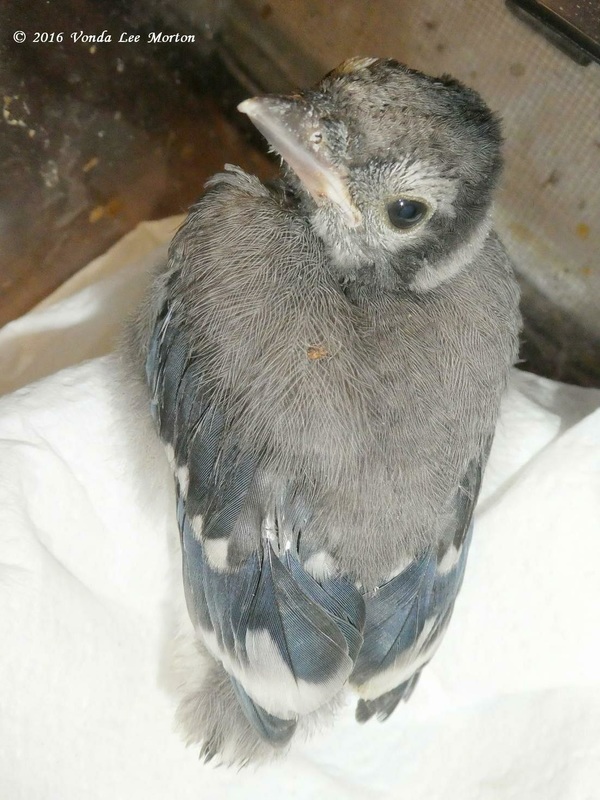
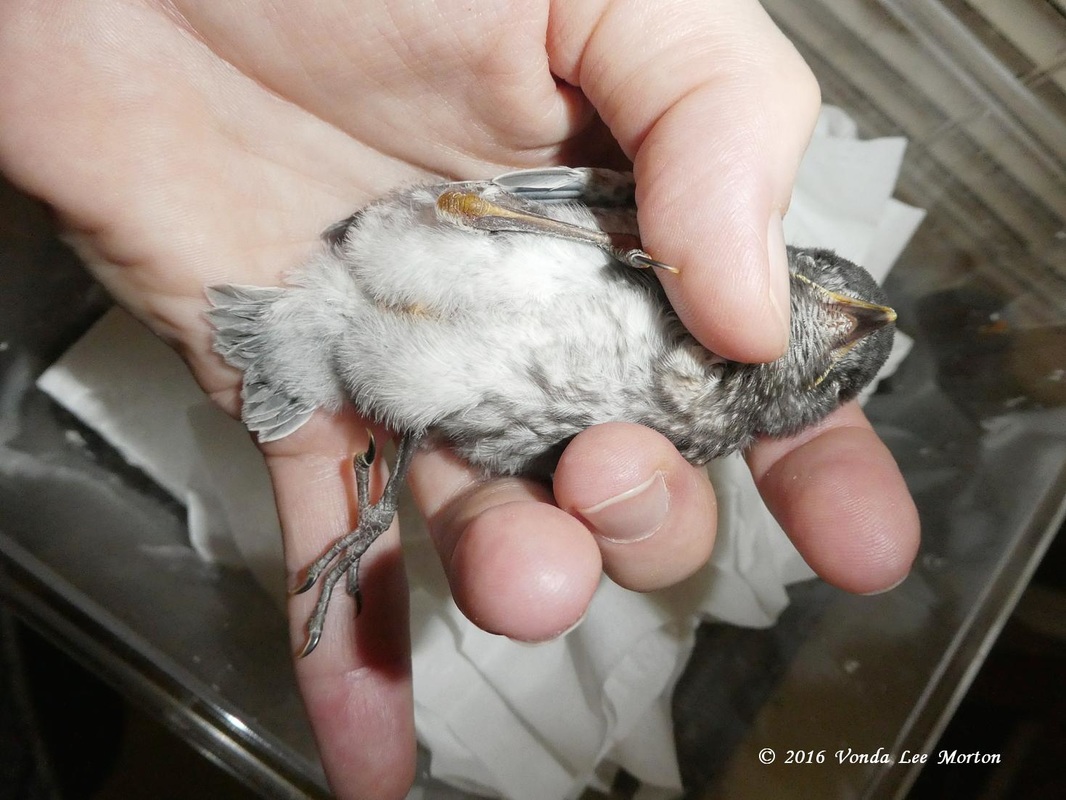
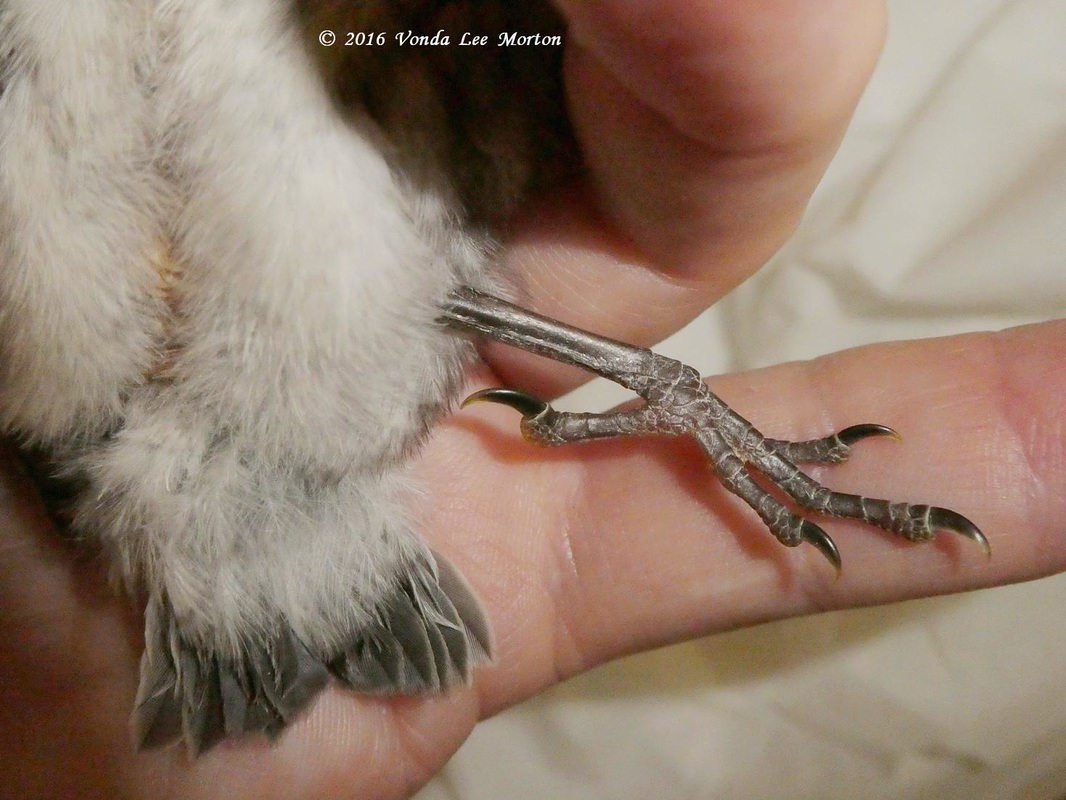
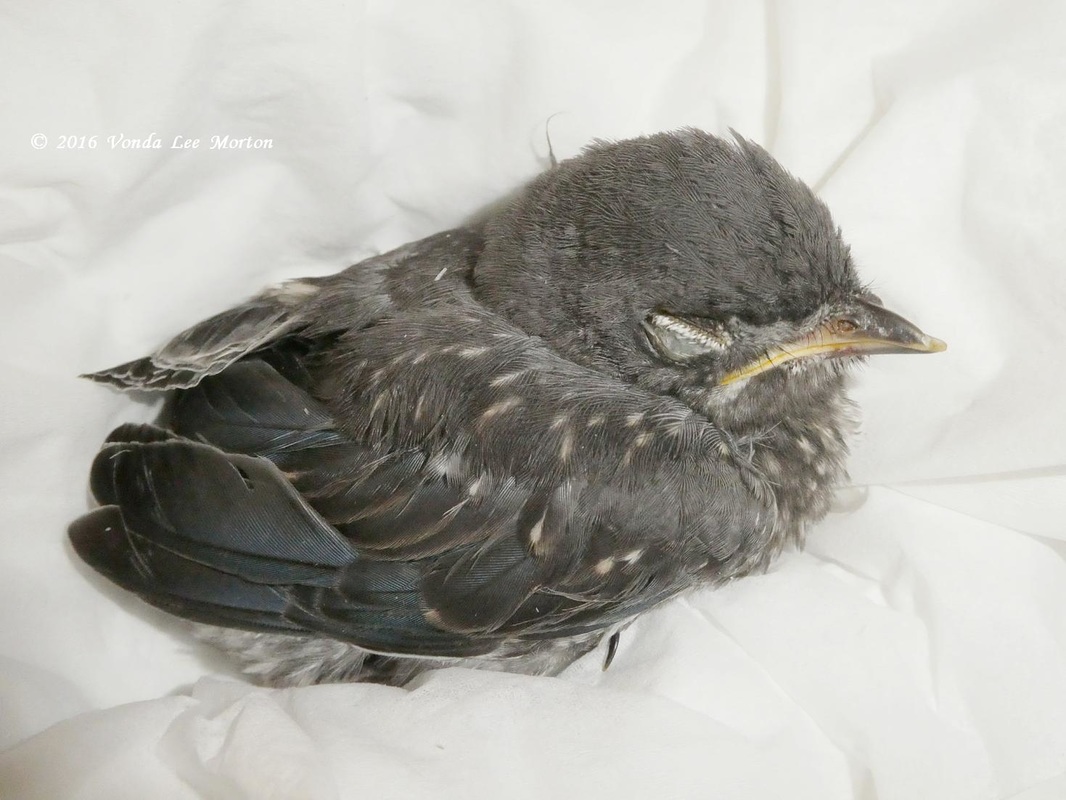
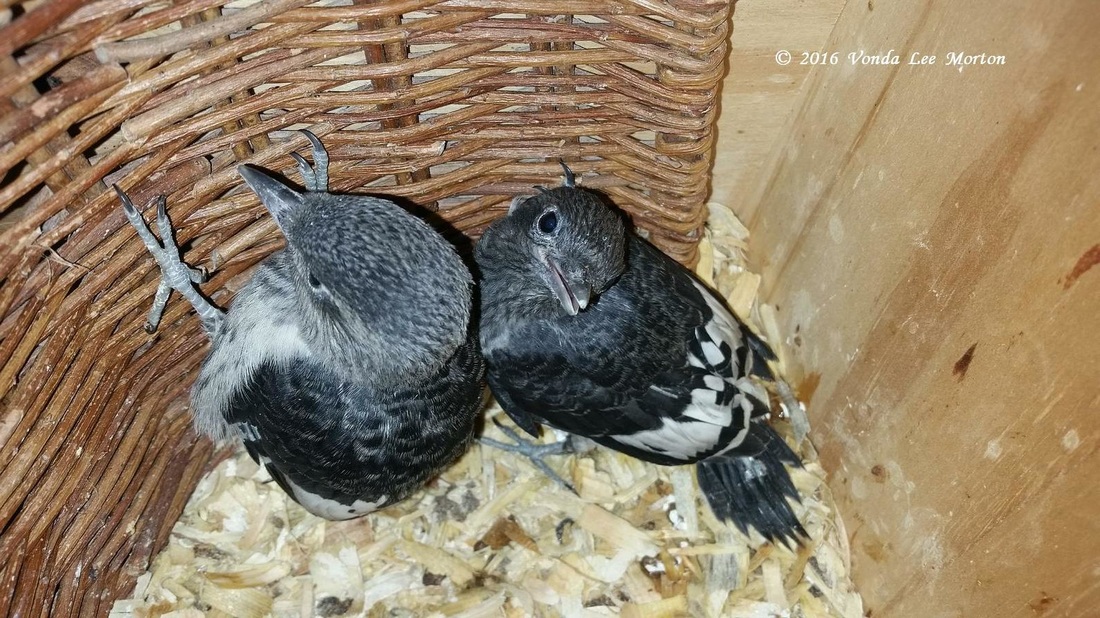
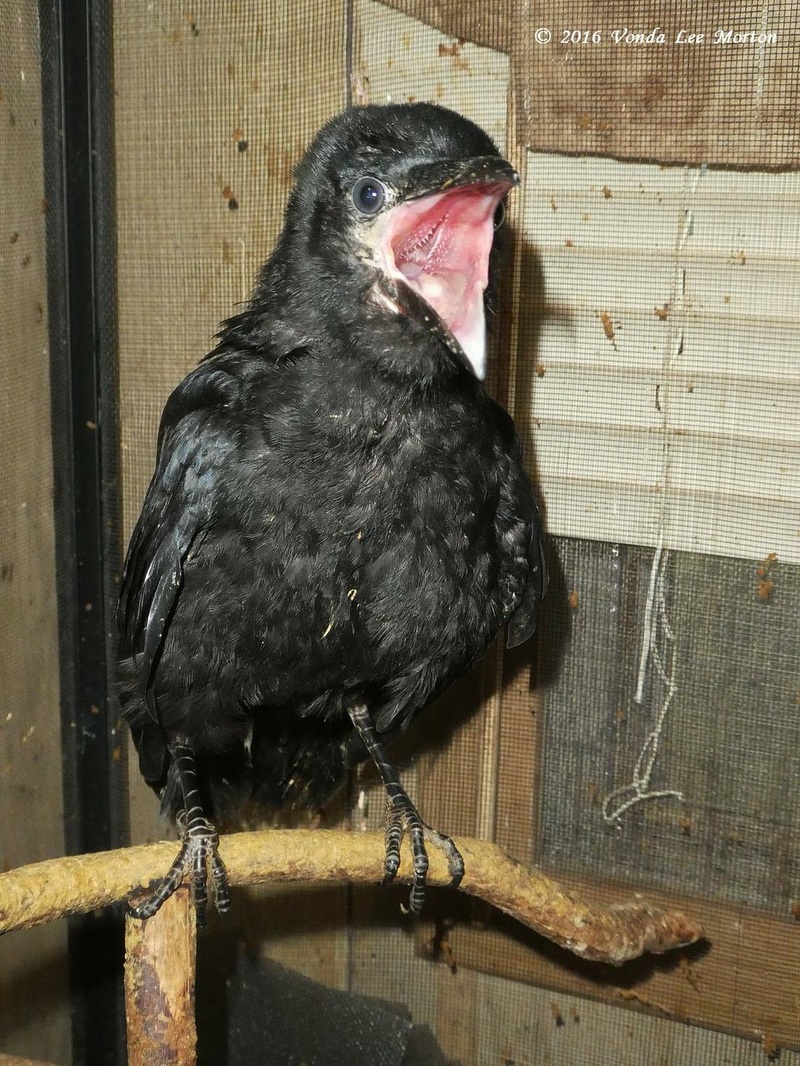
 RSS Feed
RSS Feed
